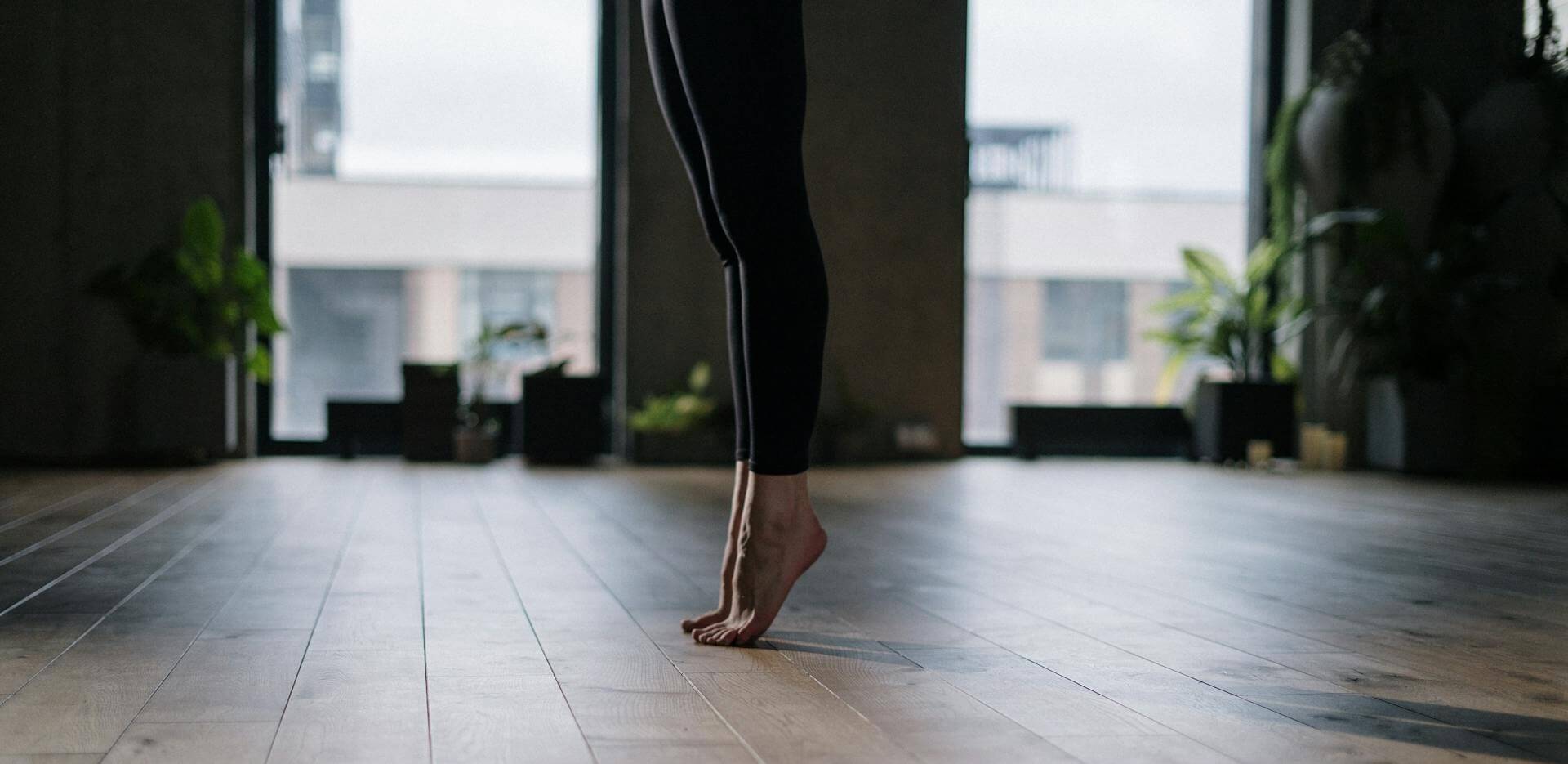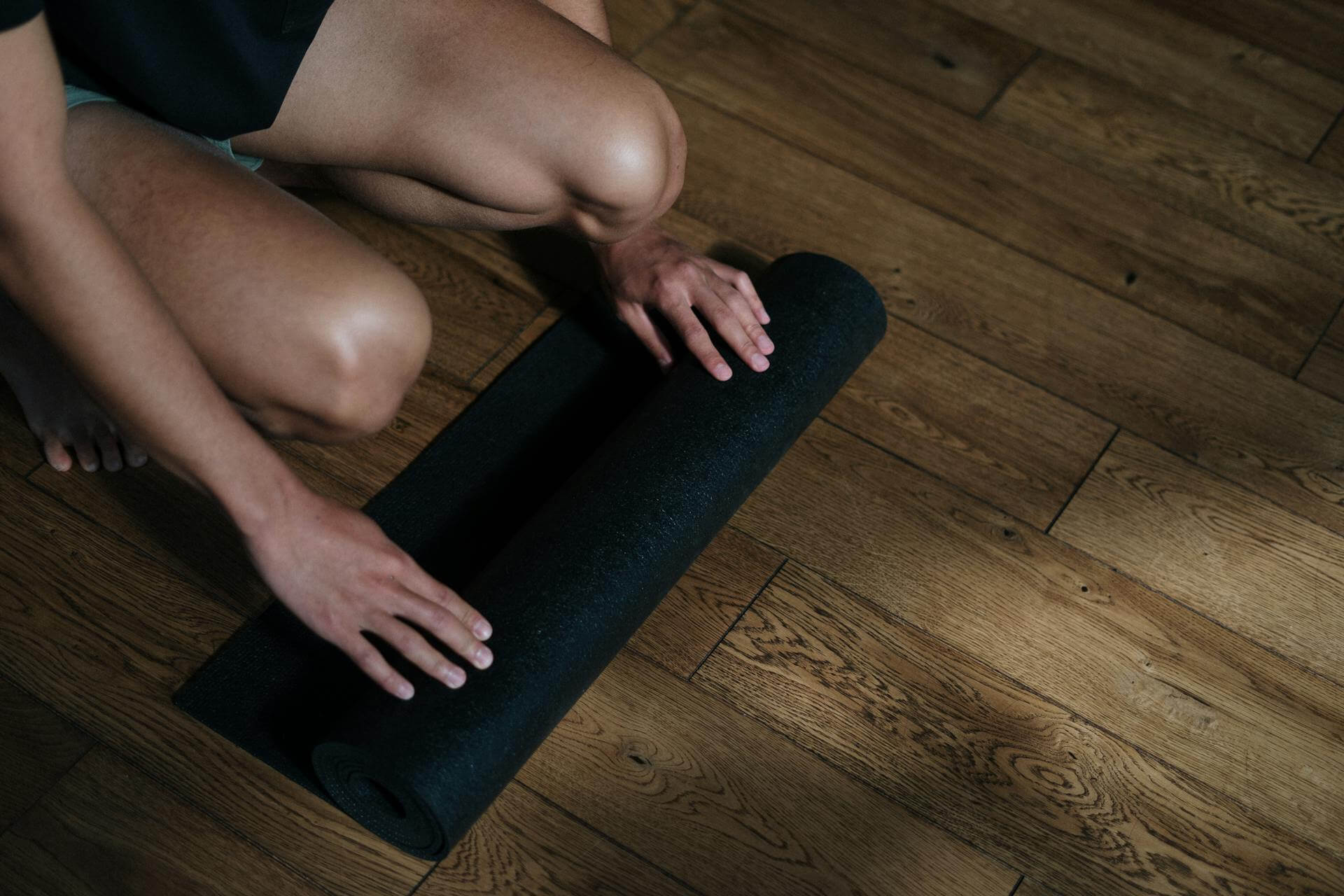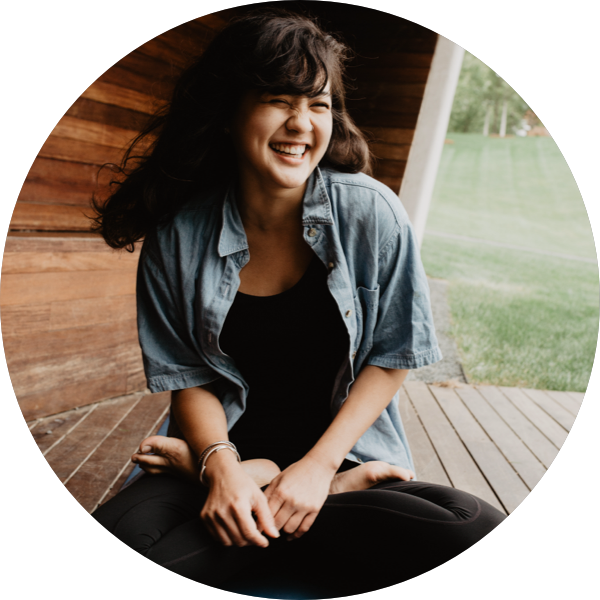
5 ways to modify classes to different studio shapes and sizes
There’s a new presence in one of the classes I teach. It comes in the form of a sharp stairwell edge, dipping down over the edge of the mat area, just barely intruding on valuable airspace for bodies to move through. I thought I really knew this studio, I’ve taught there for over three years! But I never noticed this corner before, not until these classes have started to fill up to bursting (maybe it's the springtime energy?). Now with so many bodies in the room, the class suddenly seems too cramped for comfort and in the case of the stairwell edge, maybe even dangerous.
When I started as a teacher, I faced vastly different challenges. Most often, the disheartening issue of having only a few yogis registered for classes and being forced to either cancel, or teach one or two people in a large echoey studio. Even now, when I retain a fairly regular class size, there can always be fluctuations that introduce problems to solve. Whether overcrowded or under-attended, unexpected spatial challenges can throw off any perfectly planned sequence or enthusiastic attitude. Almost no one wants their toes tickled coming out of savasana, or the potentially awkward moment of showing up expecting a really busy class to realize it's just you and the teacher. Gulp. But whether too big or too small, every class can be juuuuuuust right if modified smartly! Here are five ways to modify classes for challenging sizes and spaces.
Organize the space
Have an idea of how you want the space set up, and communicate it early. Be aware that your request may be met hesitantly, but it can be efficient and easy if you are direct and even upon arrival just a few hints can be helpful for them to arrange accordingly, “We’re a big bunch today so we’ll have to be pretty close!” or “You can set up facing the windows when you’re ready.” or even “We’re having a cozy practice today, only a few.”
Rearrange things before your class begins. I’ve now automatically included a moment to rearrange mats away from the danger of the staircase edge. If I remember to, I sometimes place a mat there anyway so no one will take that spot.
If you are allowing and anticipating latecomers ask yogis to leave one aisle free so that there is still space available once the class begins.
Genius tip: For crowded classes, stagger the mats so that the edges are never in line with another. Yogis can still do horizontal poses outstretching arms or legs with a lot less danger of bonking one another.

Talk more! Name the elephant
Being honest with the situation and saying something can ease peoples discomfort and form a sense of unity when facing the challenge. Those first classes I taught with one, maybe two yogis created a pronounced awkwardness. One time before class I could really tell that my sole student was disappointed with the lack of others, but also really wanted to practice still. After they floated the idea of just going home, I asked how they would feel if I put my mat aligned with theirs, and I could do the class practicing alongside them. This worked out great!
In those super crowded classes there can also be a disgruntled attitude if they have to suddenly shift their mat within licking distance of someone else's elbow. It’s amazing how sometimes just naming the thing can create a lot of ease. “Well this is going to be a sweaty one today won’t it!” or “Wow, where is everyone today?”.
Smarten your transitions
Classes of unusual sizes or in unusual spaces are held dearly by verbal cueing. For large groups, transitions are all the more important to facilitate and avoid any jarring butt-in-face or finger-in-eyeball moments. Think about reaching through the vertical space to still get those expansive poses minus the disruption, Include that extra step in cueing to assure less commotion; a turn of the hips, a few steps one way, circling down and around, reaching arms forward and up.
For smaller classes, there are fewer people to look to get additional cues from, and smooth transitions will keep them comfortable and focused on their own practice.
If you are teaching frequently, it is definitely worthwhile to have a few go-to sequences and known transitions. I sometimes even say “Listen carefully” for particularly complicated transitions, but the pay off is that once they know them, then they can repeat them later in class with a lot of ease and flow!
Offer more variations
For very large classes this is especially important as there may be little time to understand what the general level and experience is. For new yogis it can be great to be reminded when there are nice moments for rest or supported variations. For more experienced yogis then naming the next pose before cueing it can give them the freedom to practice at their pace. Sometimes I will even say, “If you know where we are headed then go ahead, or stick with me and…”
In a different flavor, smaller classes can give you the space to ask beforehand what each yogi wants to focus on or has any requests. Offering variations to their wishes gives you the opportunity to practice finding those variations in a smaller class before using them for larger and less controllable scenarios.
See the opportunity of the moment
Size extremes can also open up unique opportunities for sequencing. For smaller classes it can be a perfect time to take up space and attention. Go for the wide poses, wall assists, and double up on props! You can also give more attention to students in your adjustments. Try to reach each yogi with a specific adjustments that can give them insight into their practice.
Genius Tip: For small classes I invite a longer setup with all the props for savasana. Many yogis won’t have all those props at home so I invite them to experience that deep relaxation with all the props. A la prenatal yoga style; I set up with the bolster in a ramp position on two blocks placed at medium and high levels. Then use an additional bolster under the knees, two blankets under each hand, and a blanket over the whole body if wanted.
For crowded classes I find it a special opportunity to feel the collective strength of practicing in community. Classes can warm up faster and spend more time in more creative flows, or even use each other for spotting or inspiring more challenging asanas. For full classes I try to teach a sequence that we can repeat for even just a small moment without any verbal cueing. Less active classes can feel that connectedness in mediation, pranayama, or chanting moments!
So, are we ready to change it up yet? There’s just one thing missing: flow. Reading yoga tips is one thing, executing them is another. Thinking on your feet can be the most unexpected skill that comes with any kind of leadership. But modifications are more than just band-aids to your problems. Underpinning all these modifying suggestions is the practice of communication and availability to the situation.
My first unintentional private class was at the first studio I taught at. I wasn’t ready and as a result, felt terrifically awkward. Now I find myself with years of diverse yoga teaching experience, and still can be surprised by something as simple as an unnoticed staircase edge. So what changed? Mainly my awareness and communication skills that allow me to handle the situation gracefully, and be able to notice it in the first place. Integrating those new leadership instincts was clunky at first, but now they are growing with every opportunity. Slowly over time, challenges became exciting puzzles that only highlighted the uniqueness of each class. Every class you teach is a new configuration of bodies that change every second! What new questions and possibilities could this new practice bring?


